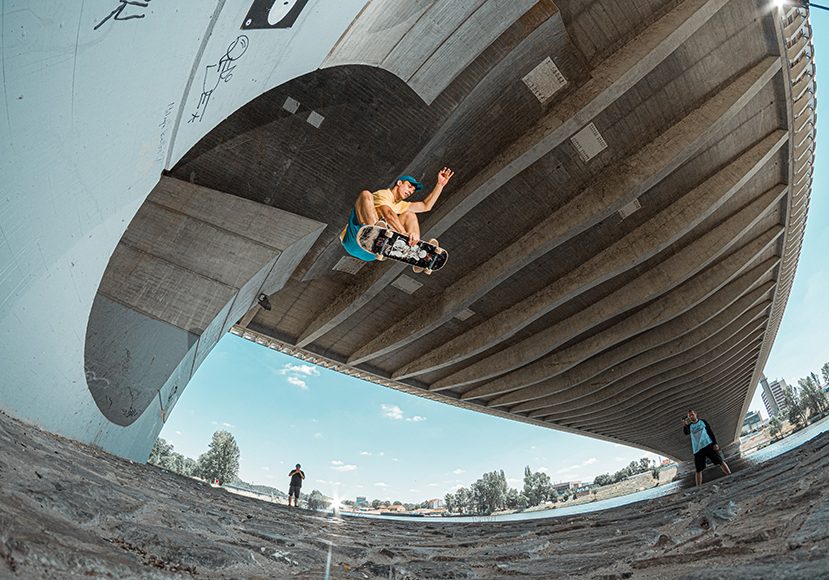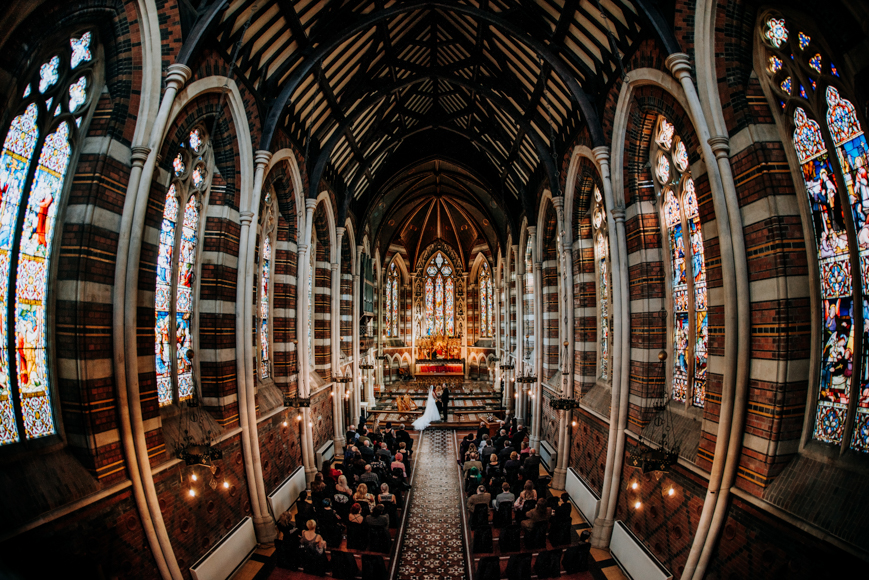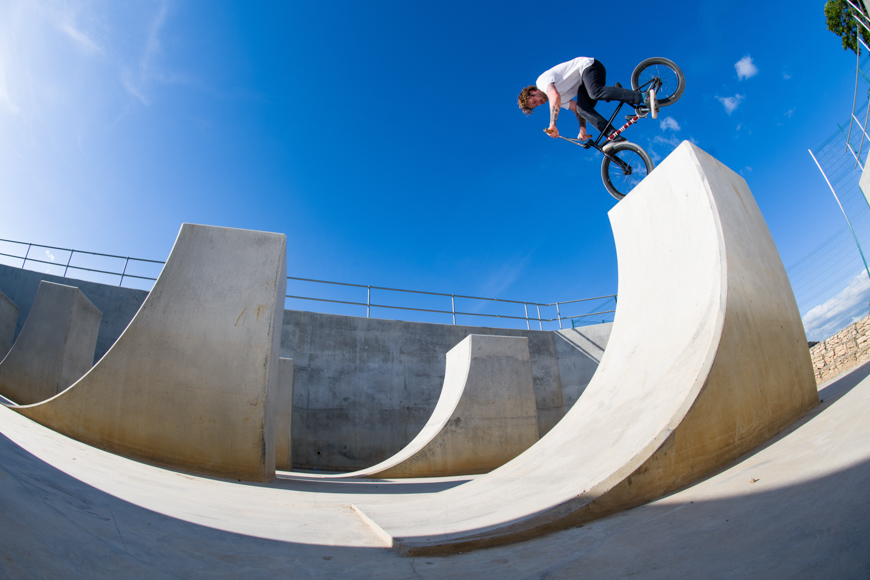
Fish Eye Lens Guide
What is a fisheye lens and how can you use one? Find out in this guide! PLUS our top picks for the best fisheye lenses for any budget.
In day-to-day photography, do you ever find yourself wishing you could achieve a more panoramic view with your wide-angle photography?
Or do you sometimes just want to try something different and creative with your camera?
This is where a fisheye lens can come in handy. Much more than a gimmick, a fisheye lens can open up a whole new ‘super wide-angle’ view of the world and allow you to capture images you didn’t think were possible.
So let’s look at why you need a fisheye lens in your camera bag and how best to use one.
Then we’ll go through the very best fisheye lenses on the market, to suit all budgets.
Table of Contents
What Is a Fisheye Lens?
A fisheye lens is an ultra-wide-angle lens that captures ‘curved panoramic’ or ‘hemispherical’ images, usually at 180 degrees.
Named after how a fish would see – hence the name ‘fisheye’ – these new lenses were at first used for scientific purposes, studying cloud formations and weather.
In the 1960s, fisheye lenses for 35mm cameras were introduced for general photography and were used for an increasingly wide range of specialist and creative uses.
You’ll find underwater photographers, extreme sport photographers, astrophotographers, and even architectural photographers utilising these types of ultra-wide-angle lenses on their camera.
As we explore further, there can be an abstract and artistic nature to image making with a fisheye.
It’s important to note that fisheye lenses come in two types:
- Circular fisheye lens – typically captures light from 180 degrees in all directions and projects a complete hemispherical image onto the camera sensor, producing a circular image on a black rectangle.
- Full-frame fisheye lens – projects the hemispherical image beyond the sensor producing a rectangular image of the scene, but one which uses the sensor’s full array of pixels. The field of view is reduced, though still extremely wide.
Many fisheye lenses are manual focus – but with such a wide angle view, and as you’ll often be shooting at narrower apertures, getting sharp manual focus with a fisheye isn’t too taxing.
Fisheye lenses are usually prime lenses, so there’s no zooming in or out – you have to do the moving to get into a good position.
However, there are a few examples of zoom fisheye lenses – we cover these and more in our list of best fisheye lenses later in this article.
Why do skateboarders use fisheye?
Photographers and filmmakers often use fisheye to capture the dynamic movement of skateboarding.
The fisheye enhances the height above the ground showing the figure against the sky, and we see the full body shape without interference from confusing background elements.
The curved sides of the lens element give the image an encapsulated look – the athlete being in a world of their own that we are not a part of.
On the practical side of things, a fish-eye lens is much less likely to lose track of the moving athlete as they ‘kick flip’ or ‘grind a ledge’ at high speed.
Skateboarders appreciate the look a fisheye lens gives. The objects they’re using in their tricks – such as stairs and rails – look bigger and more elongated, so the result is more impressive.
And what works for skateboarding works for many other sports as well – for example, snowboarding and surfing, the golfer driving off, divers and climbers, or basketball players jumping for the ball.
What’s the difference between a fisheye and a wide-angle lens?
Standard wide-angle lenses take in a wide angle of view but try to record true horizontals and verticals and keep distortion to a minimum.
Depending on the focal length, a wide-angle lens may have some ‘barrel distortion’ at the sides, but this is relatively small and can be reduced in post-processing.
A fish eye lens makes a virtue of the problem of distortion by accepting the curvature in order to show a wider view of the world far beyond the range of normal sight.
What Would You Use a Fisheye Lens For?

Because of their ultra wide angle, fisheye lenses are ideal for capturing large architectural spaces. | Credit: Hollie Mateer
Fisheye lenses can be used for any subject – the sky’s the limit, and it often is!
As viewers today we’re used to seeing fisheye versions of some subjects and accept the distortions as part of the dynamic of the image. They’ve become visual tropes and they fit within our expectations.
Here are some typical uses:
- Getting a wider shot. The original usage of a fish eye lens was to create large panoramic views at 180 degrees. Apply it to landscape or skyscapes: you can encapsulate a whole city centre in a single circular image. For night landscape photography it can produce stunning images of the stars and milky way.
- Close focusing. It may seem surprising, but a fisheye lens can focus quite close to an object, providing another way to isolate or highlight part of an image.
- Changing your point of view. Getting the camera low down, then pointing up can make the best of figures or objects against the sky. Lie on the ground and see how the ground planes out towards towering buildings or trees. Or the reverse – use it to look down from high vantage points.
- Capturing architecture. Fisheye lenses are ‘made’ for photographing wraparound spaces like sports stadiums and town squares and the interiors of old buildings such as churches and new buildings such as factories and warehouses. They can also be a useful lens for real-estate photography.
- Interesting distortions. With a fisheye lens, you can play with the lines of a building or landscape. Lean against a wall and see if you can get the lens to wrap the wall right around the image for a fun forced perspective look.
- Drawing the viewer’s eye to a subject. A figure or object standing perfectly in the centre of the image – at the’ focal point’ – will have little distortion but be surrounded by increasingly curving background features
- Trying new compositions. Push the boundaries and move the figure or subject to the edges where distortion becomes greatest, usually at 180 degrees. It’s could be hall-of-mirrors time, even comedic, or perhaps it can make a more serious point about the relationship between foreground and background subjects.
- Creating abstract imagery. Push a little further and an identifiable subject begins to dissolve into abstraction and a patterning of swirling colours. Look for colour and pattern as a subject and fisheye them, with motion blur, angling of the camera, or off focus elements. Try hanging fabrics, flowers, a reflection in water or glass.
10 Best Fisheye Lenses in 2023

Credit: Josh Moore
The most famous of all fisheye lenses is – in photography circles anyway! – the legendary Nikon 6mm f/2.8.
This incredible lens gives a 220-degree view – which, stunningly, means it can see behind itself!
It comes at a price though – this huge lens, built in 1970, goes for around £100,000 for a pristine copy. Luckily, good fisheye lenses can come much cheaper than that!
Here’s our recommended fisheye selection of varying focal lengths, for all budgets and standards of photographer:
- Moment Fisheye 14mm Smartphone Lens – even though your smartphone may already have a wide-angle lens, this one will provide a 30% wider image (170-degree angle of view). Works on iPhone, Samsung, Pixel and One Plus (requires a Moment case).
- Canon 8-15mm f/4 Fisheye – A 180-degree zoom fisheye from Canon, this will work with full frame or APS-C Canon DSLRs, providing a 180-degree circular fisheye image for full frame cameras. An excellent, professional-level fisheye lens.
- Olympus M.Zuiko Digital ED 8mm f/1.8 Fisheye PRO – For Olympus micro four thirds cameras, this is a fisheye lens with a distance, as the aperture goes as shallow as f/1.8. Professionally built – it’s weather-sealed and even freeze proof – this is a fantastic option.
- Nikon AF-S FISHEYE NIKKOR 8-15mm f/3.5-4.5E ED f/4.5-29 – A professional full frame zoom fisheye lens. This is a fantastic piece of glass, producing extremely sharp images. The variable focal length means you have the versatility to change your field of view depending on the scene. Having multiple focal lengths in one unit is extremely useful.
- Sigma 15mm f/2.8 EX DG Diagonal Fisheye – A fantastic value full-frame fisheye available for Nikon or Canon cameras. This would be perfect for enthusiasts, but also professionals who want a quality 180 degree fisheye for a slightly cheaper price than Nikon or Canon’s main offerings. The Sigma 15mm focuses accurately and produces great image results.
- Samyang 12mm f/2.8 Ultra Wide Fisheye for Nikon DSLR Cameras – There are a number of Samyang fisheye lenses available that are ideal for beginners and enthusiasts. They’re durable too, so if you’re looking to add an inexpensive fisheye to your camera bag to use occasionally, this may be ideal. This particular full frame fisheye is available for Nikon, Canon, Sony E mount and Pentax. It’s manual focus, but with fisheye lenses, manual works well – set the lens to infinity, then adjust as needed per the subject.
- 7artisans 7.5mm f/2.8 APS-C Wide Angle Fisheye Fixed Lens for Sony E Mount – A budget fisheye for Sony cameras, this 7.5mm focal length lens is very good value. It won’t give professional results, but it’s extremely affordable and fun to use, with more than useable results at 180 degrees. A great first introduction to fisheye photography.
- Samyang SYHD8M-N 8mm f/3.5 HD Fisheye with Removable Hood for Nikon – Another very affordable 180 degree Samyang lens, this time with a huge 8mm focal length, this one is available for Nikon and Canon APS-C/crop sensor cameras. If you take the hood off, though, you’ll find you can use it on a full frame camera very effectively.
- Panasonic LUMIX H-F008E Micro Four Thirds 8mm – A compact fisheye lens for Pansonic cameras. This lens focuses as close as 0.1m to the subject. With a wide 8mm focal length, it’s a fantastic lens for photographers and videographers alike.
- Lensbaby LB-CFEF “Circular Fisheye” Lens for Fuji X Camera – Made specifically for crop sensor cameras, it will also work with full frame cameras (though will then produce a smaller image in the frame). This fun Lensbaby fisheye lens is also available for Canon, Nikon, Sony and micro four thirds cameras.
Final Words
While a fisheye lens will always put its signature wide-angle look on an image, it’s a still a very versatile tool in how it can be used and with which subjects.
Experimenting may at times seem a bit frivolous, but it’s a way of finding out what the lens will do in different circumstances.
This then helps you build your repertoire of ‘visualisation’ – knowing what sort of image a lens will capture in particular circumstances and knowing where best to position yourself.
From fine detail across vast panoramas to total abstractions, the fisheye lens is the keeps on giving. It’s the most unique of wide-angle lenses, but as we always say, in the end, it’s the photographer’s inner eye that counts, not the lens.
So as ever, get out there, shoot lots of images, experiment with the photographs you’re taking and above all – have fun!
If you have any questions at all, please ask them in the comments section below and we’ll be happy to help.














